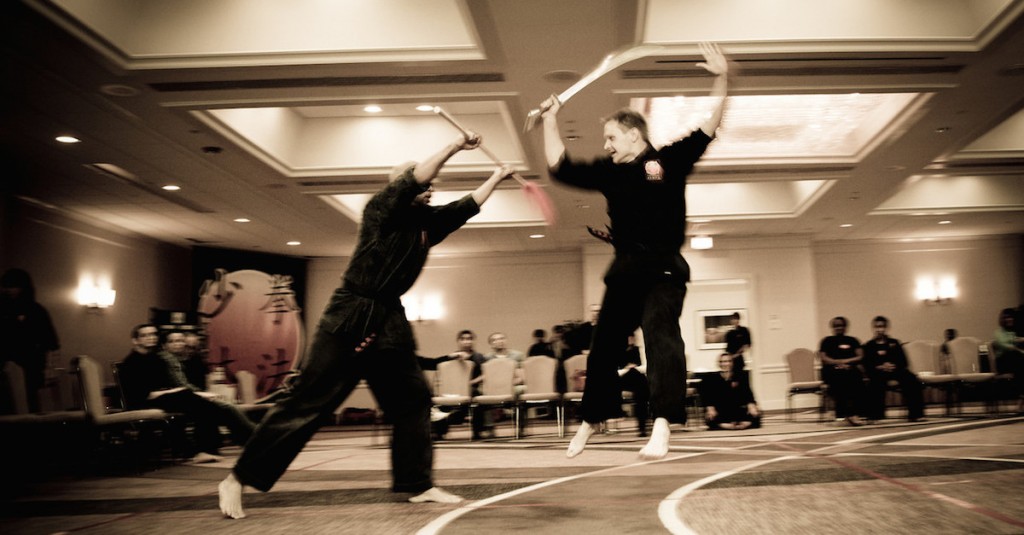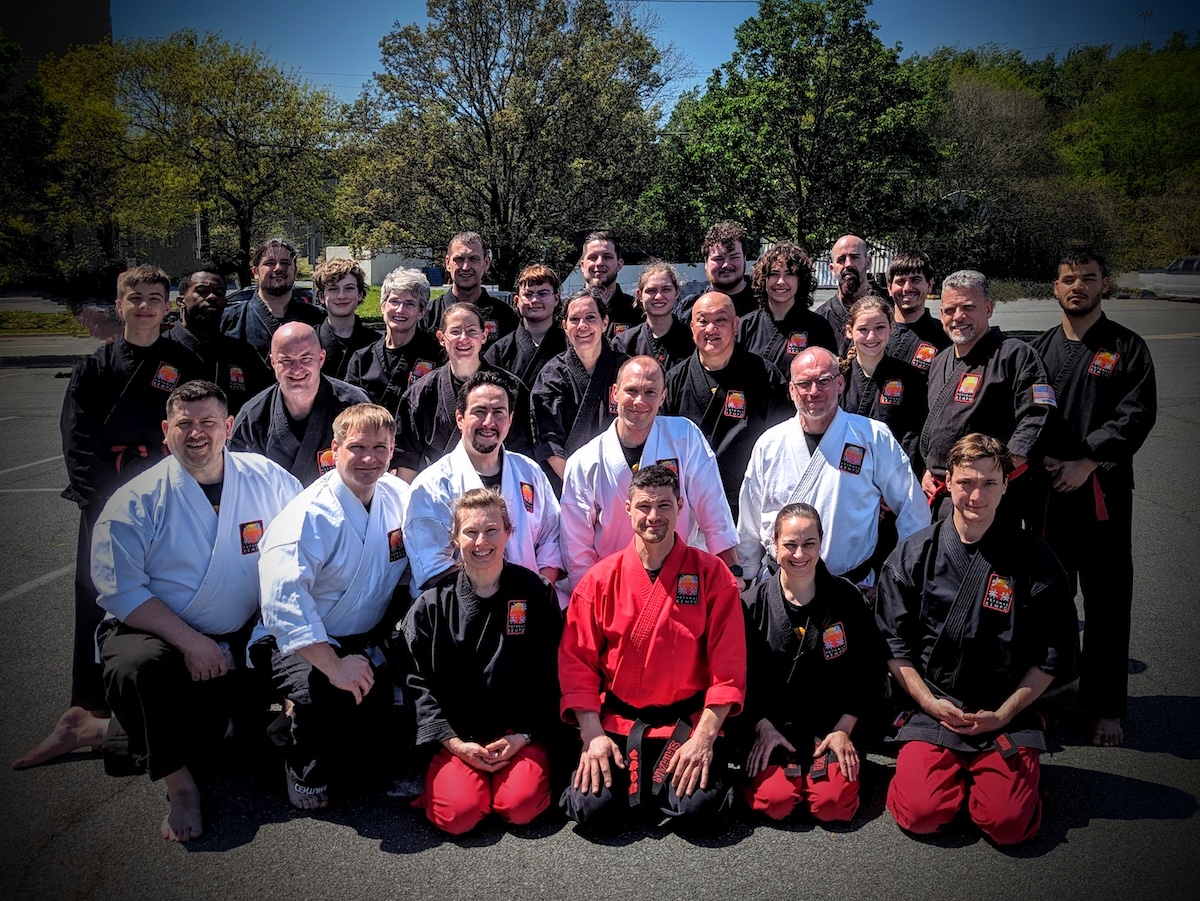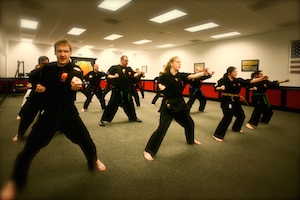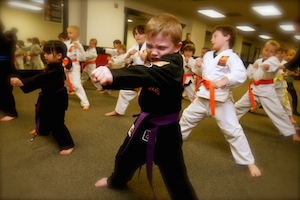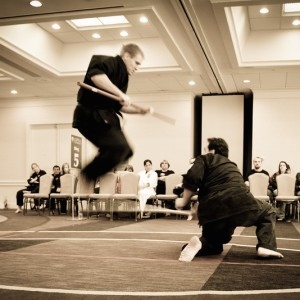 Kempo training is a cooperative enterprise. We help our partners get better, just as they help us get better. In particular, by modulating our power, range, and speed we can create the optimal environment for us both to benefit from each drill.
Kempo training is a cooperative enterprise. We help our partners get better, just as they help us get better. In particular, by modulating our power, range, and speed we can create the optimal environment for us both to benefit from each drill.
In order to ever get good enough at a technique to do it quickly, we must first succeed at doing it slowly.
Power
In partner drills we need to modulate our power to an appropriate level for the individual and the target we are striking towards. That is to say, you will strike a smaller person more gently and that you will strike the stomach with more power than, say, the neck. This practice will not only decrease injuries it will reduce fear for both partners.
Our partner will be more comfortable knowing that we are using controlled power and this will let her relax and focus on her part of the drill. This is important because too much tension impedes movement and slows learning. It will also decrease our fear that we will injure our partner. This is a very legitimate fear and one that can only be properly mitigated by the use of control. Freed from this fear we too can relax and benefit from the drill.
(I should mention that it is imperative that we develop the ability to, and habit of, striking with power. We do this by striking punching bags and to the air, though that is its own discussion.)
Range
Once we have modulated our power, we can follow through on our strikes without fear of injuring our partner. This is important for two reasons. The first is that only by following through on our strikes will our partner know if she has successfully blocked our strikes. Lacking proper follow-through we will never contact our partner, this will lead her to one of two conclusions, either that she is successfully blocking all of our strikes or that the drill is faulty. In the former case she will develop a false sense of security, fooled into believing that she is invincible. This attitude is not only counter-productive, it is dangerous for reasons that I believe are obvious. In the latter case she will lose respect for the drill since it is not accurately testing her ability to block and thus, is not giving her the feedback she needs to improve. From there she will lose motivation and her development will slow.
The second reason it is imperative for us to follow through on our strikes is for our own development. One of the things we are continually trying to improve is our understanding of ranging. Two partners can, literally, form an infinite number of configurations of stances and body positions. From each of these stance/body position configurations certain strikes are possible and certain others are not. Subtle differences such as weight distribution and height discrepancies can have a huge impact on which strikes will, and will not, be in range. Only by practicing these strikes with proper follow through can we learn which strikes will, and will not, work. If we pull all of our punches short we will either come to believe that we are never succeeding or fool ourselves into believing that we could strike our partner all of the time, but we are simply choosing not to. Only by employing proper follow-through can we generate meaningful feedback that will allow us and our partner to benefit from the drill.
Speed
In most cases it is easier to strike than to block. This is largely because of the time and information advantage that the attacker holds. He knows when, where, and in what direction he will strike. The defender must assess all of this in real-time and formulate a response. Thus, the attacker can, in most drills, strike their partner repeatedly without ever being blocked. This is not beneficial to either partner.
In order to ever get good enough at a technique to do it quickly, we must first succeed at doing it slowly. As such, our partner should modulate their speed so that we succeed approximately two-thirds of the time. This ratio is arbitrary but the principle is sound. To succeed all of the time means that the drill is not challenging us. To fail all of the time means that the drill is too difficult and will overwhelm us. Allow me to draw an analogy from something I know nothing about: batting cages.
If you were to go to a batting cage and began in the slowest booth you would likely hit every ball, though entertaining for a while it would not be challenging you, and you would not improve. On the other hand if you went the fastest booth and were unable to hit a single ball, that would be overwhelming and you would not improve. Also, if you went to a booth that altered between balls that were way too slow and balls that were way too fast you would alternate between being bored and overwhelmed. The ideal booth would have balls that were largely consistent in speed and presented enough of a challenge that you succeeded the majority — but not all — of the time. This is the environment that we want to create for our partner.
(I should mention that modulating the speed of a drill is its own challenge. However, that, too, is its own discussion.)
Though verbose, I hope this discussion of how and why to modulate power, range and speed is helpful to your training.
Respectfully,
Master Chris Santillo
